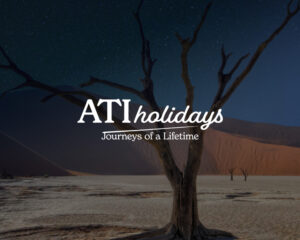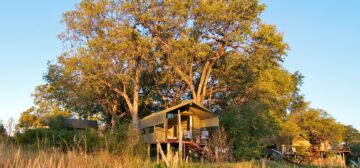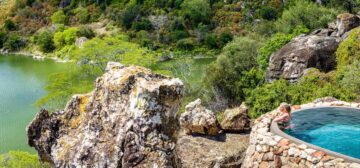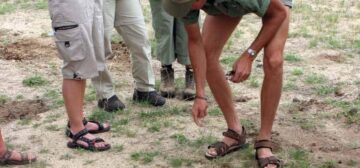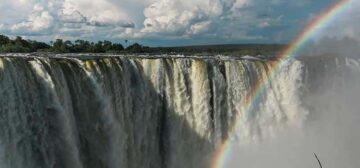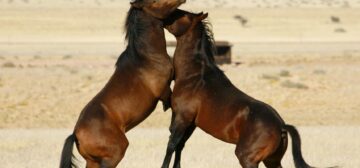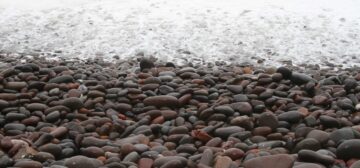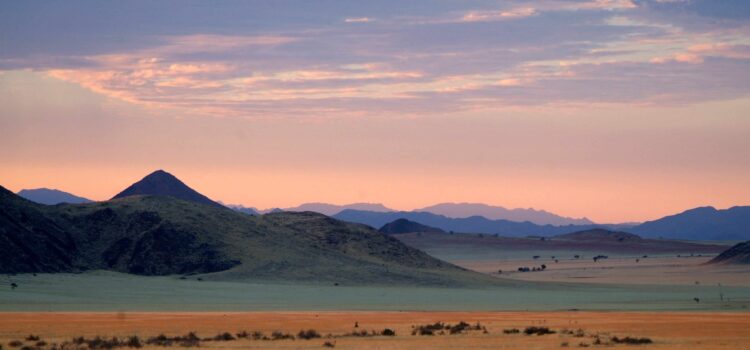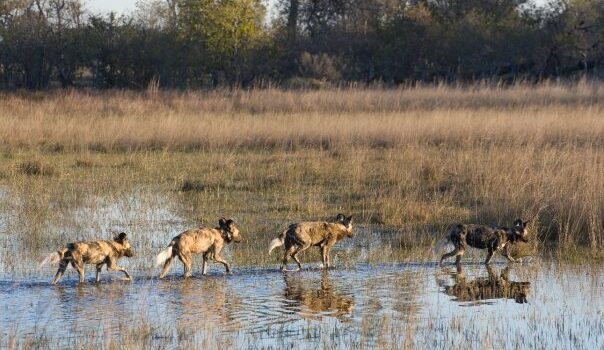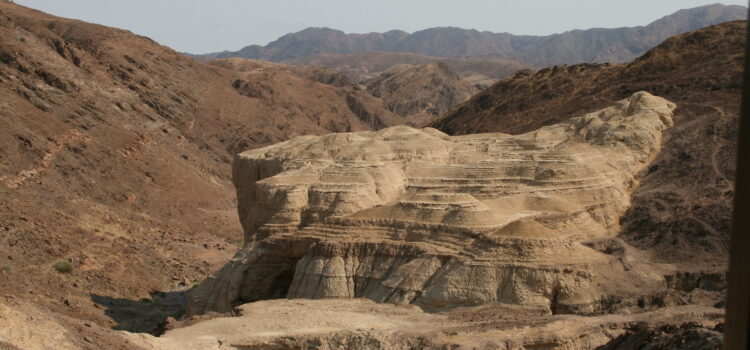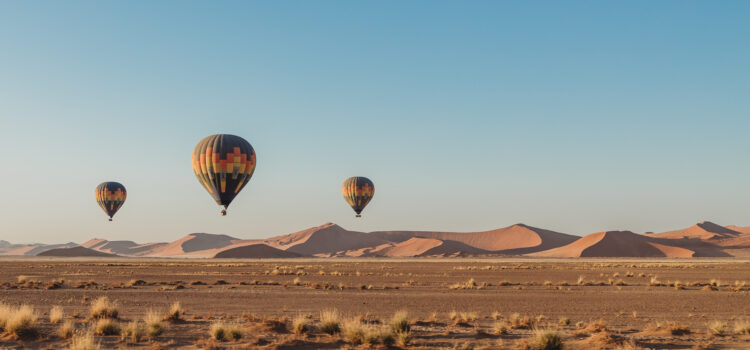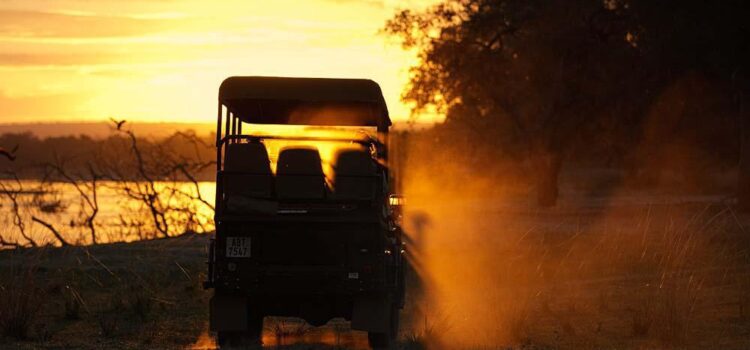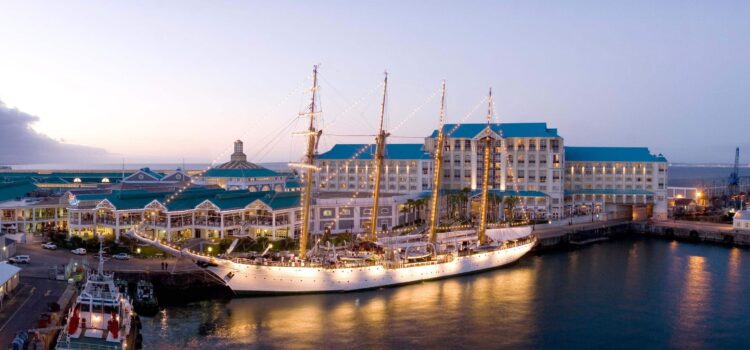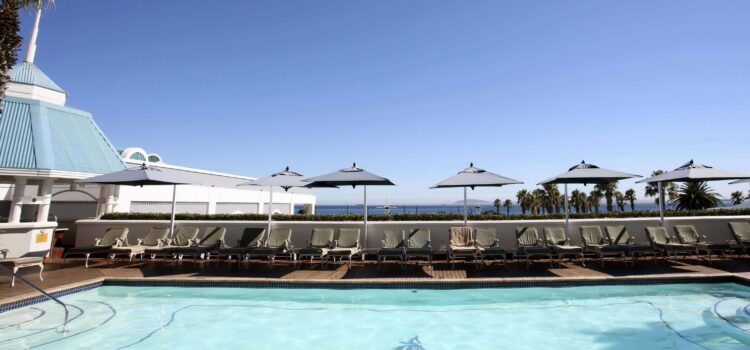Zimbabwe
This beautiful country has long been a popular tourist destination due to the huge variety of ecosystems and the amazing cultural, wildlife and landscape heritage.
General Information
Zimbabwean people remain among the friendliest in Africa, and the country will undoubtedly rise again to become one of Africa’s most popular destinations. Encompassing many ecosystems, landlocked Zimbabwe is home to the magnificent Victoria Falls, the Eastern Highlands mountain range, tranquil Lake Kariba, the largest ancient structure south of the Sahara at Great Zimbabwe, and various National Parks which are home to a great variety of wildlife species.
Geography – Environment
Zimbabwe is a beautiful, lush country with contrasting landscapes and stunning scenery. The Limpopo and Zambezi Rivers form borders in the south and north respectively and the land rises gradually from these two river valleys to a central plateau of msasa and mopane savanna woodland. The Zambezi frames the country’s northern edge for 715km and encompasses the magnificent Victoria Falls, Lake Kariba, and the wilderness area of Mana Pools. The main towns and cities are located on the fertile ridge, as are many of the farms.
The Mvurwi mountains in the north, the Matobo Hills in the southwest and the Mashava Hills in the central region are all located along the central ridge. Another range of mountains forms the border with Mozambique in the east, these are the Nyanga, Bvumba, & Chimanimani which are known collectively as the Eastern Highlands. 35% of the countries area is lowveld, and many of the prime wilderness areas are found here including Kariba & Gonarezhou National Park.
A short rainy season with heavy storms and little water replenishing the underground water table means that drought can still be a problem. Despite being in the tropics, Zimbabwe’s climate is more on the temperate side due to the high altitude of the central plateau.
The countryside is dominated by vast tracts of native trees on the highveld. These ancient woodlands are still impressive, even taking into account the destruction caused by removal for firewood. Indigenous species include Msasa, Munondo, Paperback thorn, Nyanga flattop acacia, & Mopane. The so-called ‘Rhodesian teak’ is a beautiful species which, along with other hardwoods, has been used for much of the furniture and carvings for sale in Zimbabwe. These woodland areas in turn support a great variety of bird and animal life.
Tall grasslands are present throughout much of the country, and over 5,000 species of flowering plants can be found, many of which are still used medicinally. The beautiful flame lily is Zimbabwe’s National Flower. Animal species have always thrived here and some of Africa’s most impressive species may be seen in Parks such as Hwange and Mana Pools. Unfortunately poaching is difficult to control, and with so many people unable to fulfil their basic needs at present, Zimbabwe’s wildlife is severely under threat.
History, Culture and Politics
The San were the first people to inhabit Southern Africa and around 30,000 fascinating rock art sites can be seen in present day Zimbabwe. Around 2,000 years ago it appears that San tribes began to keep small numbers of livestock and to plant grain so limiting their nomadic lifestyle. Pottery and iron smelting also began here at around this time. Between 200BC and AD1000, Bantu tribes migrated south into the area, largely displacing the San.
The 10th century saw the first signs of an embryonic Shona society developing on the central plateau region of modern Zimbabwe. These first foundations led to the growth of the first major Shona State. Historians are unsure whether the forefathers of the Shona had arrived in the Bantu tribe migration, or whether they originated from San tribes who settled into a less nomadic life. Cattle ownership increased, as did skills enabling the Shona to produce iron tools.
Gold mining led to contact with Arab traders from the coast and steadily the wealth increased. This status enabled cattle barons to establish a complex settlement at Great Zimbabwe, at the crossroads of seasonal grazing areas. At its height, Great Zimbabwe was home to 40,000 people and an army was employed to guard the cattle. The site was only occupied for around 300 years, and by 1450 the area had been abandoned, probably due to drought, overpopulation, and exhausted supplies of firewood. The Torwa & Rozvi were also strong states at the time of Great Zimbabwe, controlling large cattle herds and building settlements from stone.
The Mutapa dynasty in the north and east of the country was one of the next great powers. Originally based at Great Zimbabwe, this state broke away during the last years of the settlement. Tales of fantastic wealth and riches on the scale of ‘King Solomon’s Mines’ made their way back to the coast from Swahili traders and prompted Portuguese explorer Antonio Fernandes, the first westerner, to enter this area in 1513. Explorers, traders & missionaries now began to venture inland to seek the Munhumutapa people.
Eventually, trading posts were established and in return for the ivory & gold shipped out of the country, maize was brought from the Americas (still the staple diet of Zimbabwe today) and lemons from India were brought to the Munhumutapa. In 1818 Shaka Zulu took over the leadership of the Zulu nation to the south and began a reign of violence that scattered clans and gave the Zulu their fierce reputation.
Three of the tribes forced northwards by the violence became known as the Ndebele and settled in the west of present-day Zimbabwe, near what is now the city of Bulawayo, in 1837. The Ndebele now make up the second largest language group in Zimbabwe. The missionary Robert Moffatt was the first British citizen to reach the country, in 1854. He was closely followed by his son-in-law, David Livingstone. News of the enormous natural and mineral wealth of the country soon reached England, and the British had occupied the area by 1890.
By 1895 the country had been named Rhodesia, after the mining magnate Cecil John Rhodes. Rhodes’ British South Africa Company was given the support of the crown to push for domination of the African continent from north to south, the idea of a Cape to Cairo railway was pursued and major sections of this were completed, although the end result was never accomplished.
Taxes, land appropriation and forced labour led to severe discontent among the colonised inhabitants, and a war of liberation began. The first uprising was soon quashed in 1893, after this the Shona and the Ndebele (traditional enemies) united against the British. Many settlers were killed, but the superior firepower of the British ensured that no serious threat to the colonial power was acknowledged. Britain ruled Rhodesia for the next 85 years, dominating the language, economy, and infrastructure of the country.
In 1957 Joshua Nkomo became the president of the newly formed Southern Rhodesia African National Congress which split into two factions in 1963; the Zimbabwean African National Union (ZANU) and the Zimbabwean African People’s Union (ZAPU). Furious rivalry between the two organisations followed. At the same time, white Rhodesians were pushing the British government for independence on their terms, and Prime Minister Ian Smith finally achieved this by pronouncing Unilateral Independence in 1965. UN sanctions followed and the Shona & Ndebele again took up arms.
The armed struggle was largely ineffectual until the 1970’s when the rural guerrilla movement gained the logistical support of a newly independent Mozambique. The Rhodesian military intelligence responded by forming Renamo, a guerrilla movement aimed at destroying Mozambique’s infrastructure and bringing down the Marxist government. By the mid 1970’s outside influences from the USA and South Africa were pushing for a settlement to the on-going conflict, and in 1979 an all-party conference in London saw the signing of a peace accord with the first free elections being held in February 1980. ZANU won with Robert Mugabe becoming the Zimbabwe’s first, and long-standing, president.
27,000 people had died in the war of independence, and 150,000 more had become refugees. Despite this difficult starting point, the economy began to soar with the 1980’s being hailed as a boom decade for the new country. Up to two thirds of Rhodesians left, but the white farmers stayed and continued to provide the backbone of the economy. Conflicts between ZANU & ZAPU continued, however, with violent bloodshed in Matabeleland, the home of the Ndebele. A resolution was reached in 1987 and ZAPU’s leader, Joshua Nkomo, became Mugabe’s vice president. ZANU became ZANU (PF), the PF standing for People’s Front.
Land issues, which the liberation movement had promised to solve, re-emerged as the main issue for the ruling party around 1997. Despite majority rule and the existence of a “willing-buyer-willing-seller” land reform programme since the 1980s, whites made up less than 1% of the population but held about 70% of the most arable land. Mugabe began to redistribute land to blacks in 2000 with compulsory land redistribution.
Eventually a wide range of sanctions were imposed by the US government and European Union against the person of Mugabe and the government. The confiscation of the farmland was affected by continuous droughts and lack of inputs and finance led to a sharp decline in agricultural exports, which was traditionally the country’s leading export producing sector.
As a result, Zimbabwe experienced a severe hard-currency shortage that led to hyperinflation and chronic shortages in imported fuel and consumer goods. In 2002, Zimbabwe was suspended from the Commonwealth of Nations.
Zimbabwe’s current economic and food crisis, described by some observers as the country’s worst humanitarian crisis since independence, has been attributed in varying degrees to the government’s price controls and land confiscations, the HIV/AIDS epidemic, and periodic drought affecting the entire region.
In September 2008, a power-sharing agreement was reached between Mugabe and Tsvangirai, in which Mugabe remained president and Tsvangirai became prime minister. However, due to ministerial differences between their respective political parties, the agreement was not fully implemented until February 13, 2009, two days after the swearing in of Tsvangirai as Prime Minister of Zimbabwe.
Health & Malaria
The lowveld areas of Zimbabwe, including the Zambezi Valley and the southeast of the country, are malaria areas and recommended prophylaxis should be taken. Your doctor can advise you on the best type for the area of travel and your personal requirements. However, taking prophylaxis will not guarantee that you will not contract malaria! The best way to avoid malaria is to avoid being bitten by the mosquitoes that carry the parasite. Only the females of one species of mosquito (Anopheles) carry the tiny parasite, and the greatest incidence of malaria is in areas of high population where there are many people for the mosquito to bite and pass the parasite between.
Mosquitoes usually bite between sunset and sunrise, so make sure that you are covered up during this time! Wear loose-fitting, long-sleeved shirts and trousers, use a good insect repellent and sleep underneath a mosquito net or in a tent/ room sealed with netting. If you do develop flu-like symptoms, or feel at all unwell, during your holiday or after your return home, you must make sure that your doctor knows that you have recently travelled in a malaria area. Malaria is not a serious problem provided people take adequate precautions and seek advice and treatment immediately if they feel unwell.
The provision of basic services and health care is available but unreliable. Some serious medical cases will be evacuated by air to South Africa where further facilities are available. You must make sure that comprehensive travel insurance is taken out before you travel, this insurance should cover any medical expenses, air evacuation and repatriation if necessary. It must also cover delay, curtailment, or cancellation of your holiday or any associated flights.
Water
Familiarise yourself with precautions to avoid cholera, drink or use only boiled or bottled water and avoid ice in drinks. The standard of water quality and piping is low and there are frequent and severe shortages of municipal water. Rigorous food and hygiene measures should be observed, and you should take particular care with any foods bought at the roadside or in the markets.
Climate
- Rainy season: November to April. Rainfall does not usually occur every day, and generally takes place in the afternoon with mornings being fairly clear.
- Summer: November to April with a high of 29° C and a low of 18° C.
- Winter: May to October with a high of 25° C and a low of 6° C.
Season Summer rainy season (November to April)
Pros: Quieter tourism period, lush green inland landscape, beautiful sunsets, and stunning views of electrical storms.
Cons: Warm temperatures, activities may be interrupted by rain, increased mosquitoes in lowland areas.
Season Winter dry season (May to October)
Pros: Cooler, clear skies, fewer mosquitoes.
Cons: Busier tourism period, cooler mornings, and evenings.
Our personal preference would be for either April – May or early November as these times are neither too hot nor too cool. At these times, rain should not be a problem and the heat is not excessive. Wildlife sightings are usually at their best in the dry, winter season.
Photography
Bring plenty of memory cards and a spare camera battery as these items may not be available in some of the more remote areas of Namibia. A good zoom lens (minimum 200 mm) is essential for wildlife photography.
A good zoom lens (minimum 200 mm) is essential for wildlife photography. Photography of government offices, airports, military establishments, official residences, and embassies, in addition to other sensitive facilities, is illegal without special permission from the Ministry of Information. Taking photographs of members of the security services (police and armed forces personnel) and of demonstrations and protests is not permitted. Laws are strictly enforced.
Clothing
Neutral, muted colours such as khaki, dark green or beige ensure as little disturbance to wildlife as possible whilst on game drives or walks. White or bright colours are not advised, and army camouflage uniforms or army hats are prohibited in Zimbabwe.
Recommended Packing
Light, casual clothing (shorts/shirts) for everyday wear, stout shoes for walking, light waterproof jacket for summer, warm jumper/ fleece for winter, warm long trousers for winter, two sets of good casual clothes for evening dining where appropriate, towel, broad brimmed hat, sunglasses, sunscreen, camera, plenty of film & spare battery, binoculars, reliable torch, sleeping bag if camping. Evening wear in the lowveld should be light coloured and loose fitting to discourage mosquitoes.
It is also worth noting that if you are travelling by light aircraft, you should carry no more than 10-15kg of luggage in a soft bag for ease of packing.
Currency
The Zimbabwean dollar has been taken out of circulation indefinitely. The most widely used currencies are the US dollar and the South African rand. It is inadvisable to carry large amounts of cash. Credit and debit cards are widely accepted. Although it is possible to withdraw cash from some ATMs, it is not advisable to rely on this service being available throughout Zimbabwe. It is illegal to exchange foreign currency in Zimbabwe anywhere other than at officially licensed dealers (e.g., banks), who may not have sufficient currency to accommodate your request. It is advisable to have small denomination notes, as change is rarely available.
Visa Requirements
Visitors from the Commonwealth and some other countries can obtain tourist visas at the border, current prices should be checked before travel. Please contact us for details regarding your personal visa requirements.
